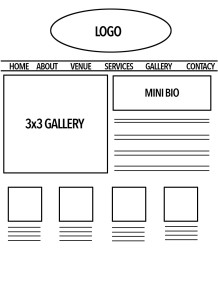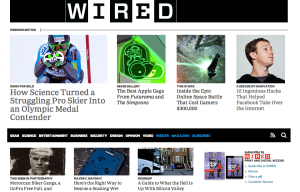Social media. For some, it’s a way to vent, share silly happenings of their day, or ask questions. For others, it’s a valuable tool to reach their audience.
I’m part the latter group. Through my work with my University’s student radio station, I’ve learned many, many things about marketing, promotions, and how to best utilize the social landscape we rent (not own!) to reach our audiences.
Side note: I am by no means a master. I have a lot of experience yes, and I’ve helped clients with their social media presences, but I’m constantly learning and adapting as these sites grow and adapt.
From my experience and research, images play a huge role. Not only did Facebook make its new layout very image-focused and Twitter added header photos and other image-focused changes, we as human beings are a very visual populace. An image catches our eye, makes us look twice, and creates an emotional response. From my experience, images garner the most engagement. Likes, comments, and shares. One time I saw a fellow student I didn’t know with one of my images as her profile picture. I was flattered, then annoyed since, you know, COPYRIGHTS!, then flattered again because I could see that the lyrics or verse (can’t remember which) meant enough to her that she wanted to make it her profile picture (I’m ignoring the whole profile picture discussion… 😉 ).
I have concrete analytics that show posts with pictures bring more engagement, which is what one of the goals is, after all. (The main goal should be interacting with your audience, not numbers. Numbers help, but that’s not the be all end all.)
Now, to the guts of the post. There are a number of things that I’ve found help when using images as part of a social strategy. Have more? Comment below! I love to hear new ideas. 🙂
- Use the crop tool. While this is not as big of an issue anymore, I still think it’s important. Square images are utilized across Facebook, as well as Twitter. Oh, and that little app Instagram. Profile pictures, for example. This is especially important when it’s a company or organization, but make sure the image, if not square, looks halfway decent when cropped to the square that Facebook and Twitter do to profile pictures. BUT, the crop tool doesn’t just have to be square, either. Especially with the semi-recent changes to Facebook and Twitter. Find what works best for you, and use it. (Don’t forget to reevaluate occasionally, too!)
- Look beyond Photoshop. Sure, Photoshop is the cool kid, but let’s be real, it’s a beast. I have Photoshop, I use Photoshop, I like (most of the time) Photoshop. But sometimes it’s not worth launching the program for a small little project. Enter PicMonkey. The base level of the site is free, and it’s grown to be more than just a picture editor. You don’t need hundreds of dollars worth of programs to make a great looking image for social media.
- Like it or not, Pinterest is a thing. I read a lot of blogs, and many bloggers (at least in the health/fitness/food genre) utilize pinterest, and they always use an image in their blog that acts as the link to Pinterest, and the image seen throughout the site when people repin. I personally am not a Pinterest junkie (partially because I’ll waste too much time with home decor and DIY
time wastingbrainstorming). But, as a social media junkie, I realize the power it has. Especially if your target audience is on Pinterest. - More is not always better. This is two-fold. Don’t flood your poor followers’ feeds with images. Keep to the same schedule you are, but work to incorporate more images. Try adding one or two a day/week (depending on how much you typically post), then work up until nearly every post (that will benefit from an image) has an image.
Well, there’s definitely more, since this is way more than a one-post topic, but these are the most important aspects of images in the social landscape that I’ve seen. Any others that direly need to be said?




































